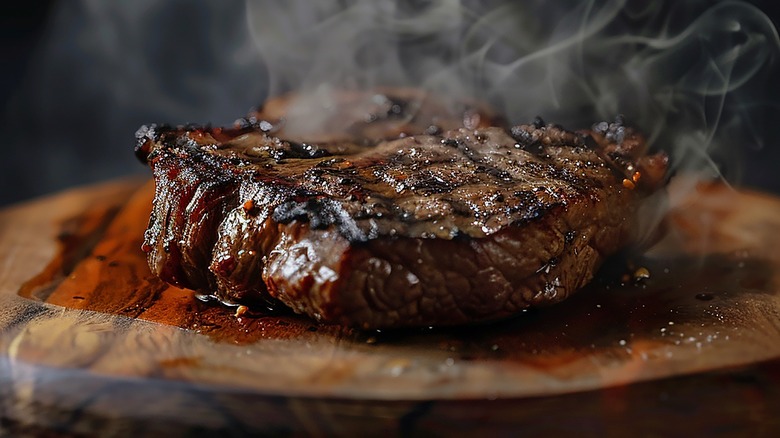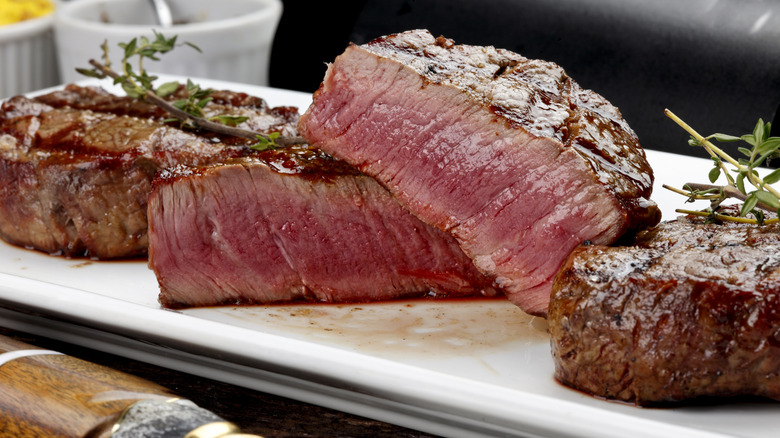Here's What The Red Juice In Your 'Bloody' Steak Actually Is
For some red meat lovers, eating a steak rare or "bloody" offers the best taste with an extra juicy texture. For others, the sight of the beef leaking what resembles a pool of blood is rather unappetizing. But that red liquid isn't blood at all: Rather, it's a mixture of water and a protein called myoglobin. Myoglobin's function is to carry oxygen through the animal's muscle, and it's responsible for the red color you see in fresh meat.
You can see myoglobin in action both before and after steak is cooked. Around three quarters of meat is made up of water, so if raw steak is frozen, the water forms ice crystals which can tear the muscle's cells. When the crystals thaw, the melted liquid contains some of that iron-rich myoglobin, which can resemble blood. These juices are often found inside packs of raw meat – you may have also heard it referred to as "purge" or "weep." Pretty much all of the animal's actual blood is removed when it is slaughtered and processed.
Several factors can affect the color of a raw steak, from the age of the animal to the way the meat has been stored. Either way, when myoglobin is exposed to oxygen, it forms another compound called oxymyoglobin and turns from darker purple to a brighter blood-red hue. It's why meat often looks dark when it's vacuum-packed, but becomes redder once it has access to air. And when you cook your chosen cut of steak, the myoglobin content affects the color of the meat and its juices.
Rare meat looks redder because it has more myoglobin
While there are many steak temperature terms that are meaningless, the commonly accepted terminology — rare, medium rare, medium, medium well, and well-done — refers to the specific internal temperature of the meat. This temperature affects the appearance and juiciness of the cooked steak, whether the center is red, pink, brown, or even gray. That's because heat causes myoglobin to break down and darken.
Beef and the juices that come out of it look red and '"bloody" inside when cooked to a rare 140 degrees, because myoglobin does not denature much at this temperature. Essentially, the more myoglobin is present, the more red it will be. However, color alone should not be used as an indicator of how well your steak is cooked, as looks alone can be deceiving. For this reason, use a meat thermometer to check that your steak has reached the USDA-recommended minimum internal temperature of 145 degrees Fahrenheit.
Whichever way you're cooking it, the key to a succulent steak is to keep as much of the juiciness inside rather than letting it spill all over your plate. The best way to achieve this is to rest your beef for five to seven minutes after it's cooked and before you serve or cut it. Resting the meat is Anthony Bourdain's most crucial tip for perfect steak, since those few minutes allow the juices to redistribute throughout the meat for a more satisfying bite.


